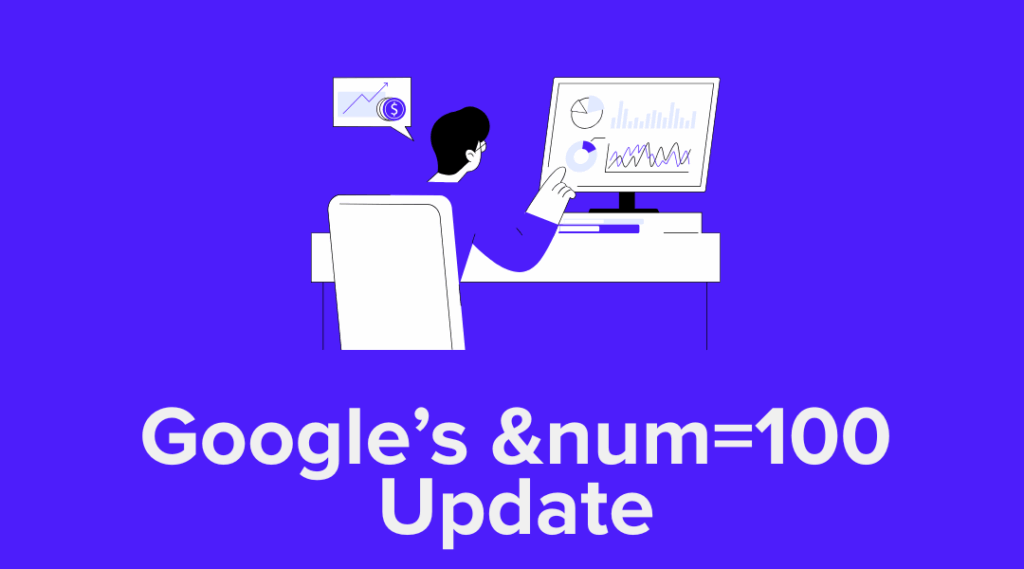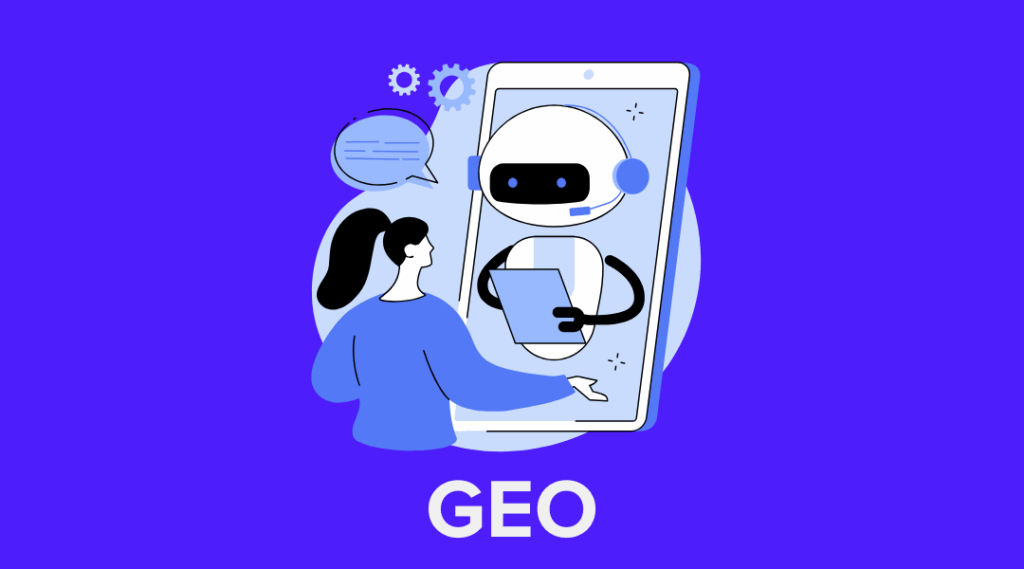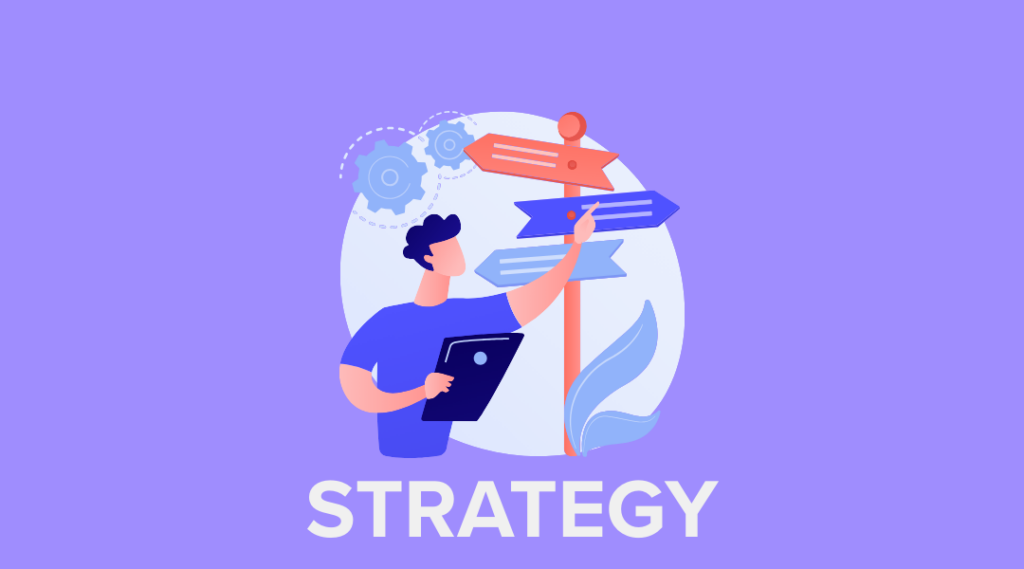Summary:
Google’s AI Overviews (AIOs) are rewriting the rules of SEO. They’re claiming a growing share of clicks—especially on broad, high-funnel terms—while traditional KPIs like traffic and rankings fail to capture what’s really happening. Impressions are rising, but traffic is falling—even when rankings hold—because users are scanning overviews instead of clicking through. To measure success in this new landscape, marketers must shift their focus to visibility metrics like impressions, AIO citations, branded search growth, and revenue. Entity optimization, off-page authority, and content depth are now essential to earning presence, trust, and downstream results in an AI-shaped SERP.
If your organic traffic has taken a nosedive—but your rankings haven’t budged—you’re not alone.
Since late summer and early fall of 2024, Google’s AI Overviews (AIOs) have rolled out fast and wide. By Q1 2025, they’ve become a staple in high-volume, top-of-funnel SERPs and are spreading beyond that. They show up heavily where users search broad terms, big questions, and early consideration queries—the same places many of us have spent years building strong SEO visibility.
Now marketers are seeing this pattern in their key performance indicators (KPIs): clicks are down, but impressions are skyrocketing. Position one still holds. Sometimes you're even cited in the AIO. And yet traffic drops, leaving teams wondering: what gives?
Welcome to the new SEO reality—where the surface metrics no longer surface the truth.
The AIO effect: why your KPIs are misleading
AI Overviews are commandeering anywhere from 25% to 40%+ of traffic coming to a results page, meaning fewer clicks are flowing to those top-ranking sites. And they’re not just targeting niche or long-tail searches—they’re taking over the broad, high-funnel terms that historically drove the greatest share of traffic.
Here’s what we’re seeing across properties:
- Clicks are down, even when you maintain position one.
- Impressions are up, oftentimes significantly.
- Conversions may be steady or slightly up, because the people who do click are further along.
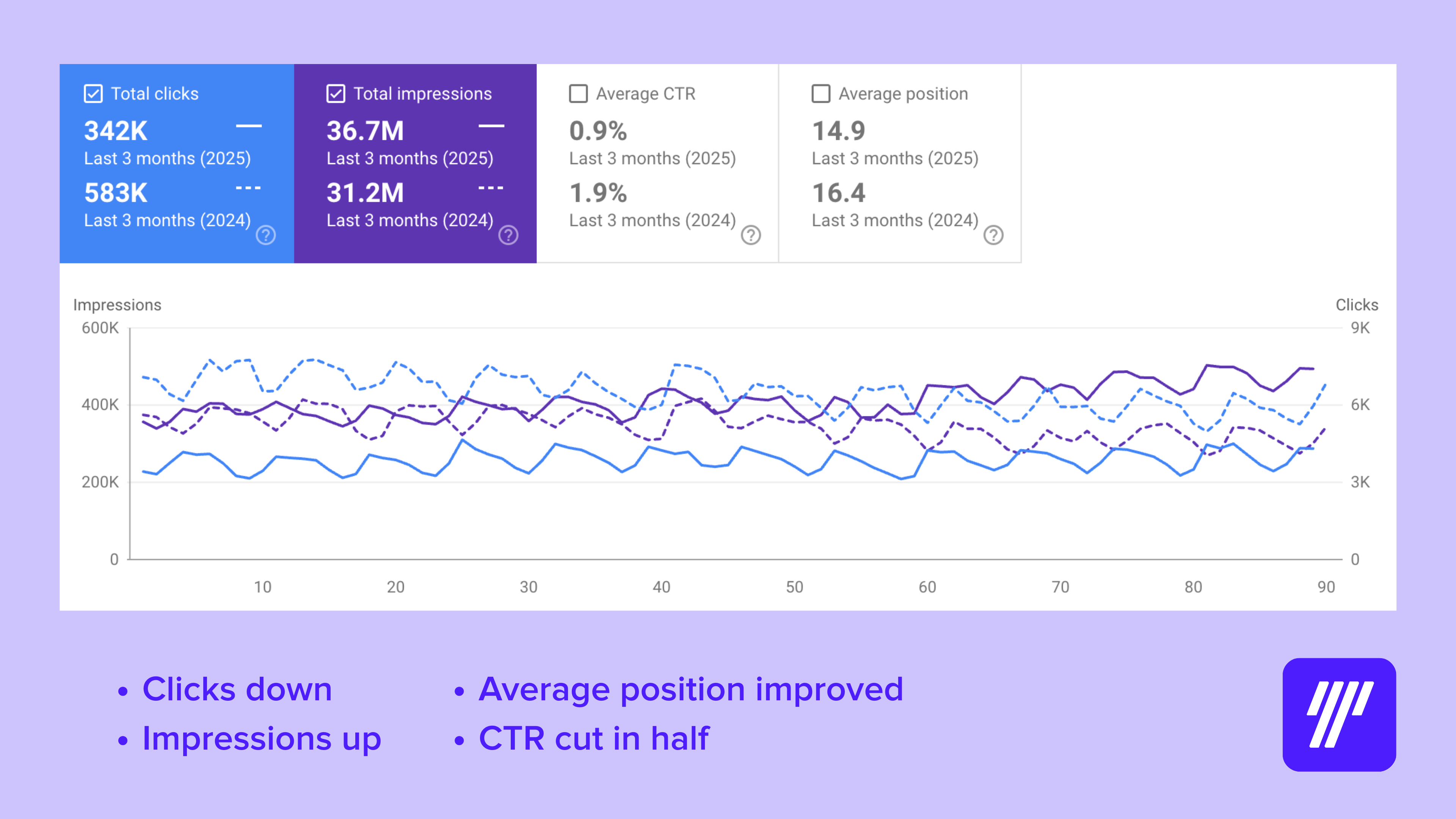
The takeaway? User behavior is shifting at the SERP level. They’re browsing in the overview, forming impressions, and sometimes choosing not to click because they feel they’ve gotten what they need; or they’re clicking later, through branded search, potentially driving up homepage clicks.
Your content is still doing its job. But your KPIs aren’t telling the full story.
Traditional metrics are cracking under pressure
Organic traffic and keyword rankings have been foundational SEO metrics for over a decade. But in a world where users scan summaries, not listings, and bounce between surfaces, these numbers only capture part of the picture.
Consider this: Your site used to drive 100,000 monthly organic sessions. Now it’s closer to 60,000. You didn’t drop in rank, but the AIO displaced you visually and preempted the click.
That 40K drop isn’t just a traffic loss:
- It’s 40K fewer user that could have been potential email subscribers.
- 40K fewer visitors to retarget via paid campaigns.
- 40K fewer signals to build audience intelligence.
The bleeding isn’t just from SEO—it’s felt in lifecycle marketing, paid media, and brand recall. Chasing the dip with more content won’t fix this, because the problem isn’t with your content. The issue is how AIOs have caused users to change their behavior, and that demands a shift in how we track, report, and act.
What to track instead: A new SEO KPI stack
SEO isn’t dead—but your dashboard might need a rethink. These are the five metrics that give us a more complete picture of success in a post-AIO world than traffic and keyword rankings. Each one helps us understand reach, visibility, and conversion potential beyond the click.
1. Impressions
What it is: How often your page shows in search, including AIOs.
Why it matters: Even without clicks, AIO visibility builds awareness. Think of it like a high-traffic billboard: people see your brand and start to recognize it, even if they don’t visit immediately.
How to track: Use Google Search Console. Monitor impression growth alongside CTR shifts. Expect rising impressions with declining CTRs in AIO-heavy queries.
2. AIO Citations
What it is: Your content being directly linked or referenced within an AIO.
Why it matters: This is premium placement in a prime position. It’s a signal of trust from Google’s generative engine and impacts brand visibility.
How to track: Tools like Semrush and Similarweb are beginning to surface AIO tracking. These results rotate more frequently than traditional listings, so frequent snapshots or alert-based monitoring is essential.
3. Share of SERP / SERP Feature Coverage
What it is: Presence across search features—featured snippets, image packs, video carousels, People Also Ask, AIOs, etc.
Why it matters: Visibility across formats reinforces brand authority and increases chances of being discovered across different search intents.
How to track: Use SERP feature breakdowns in tools like Semrush, Ahrefs, and STAT. Supplement with manual spot checks for high-value terms.
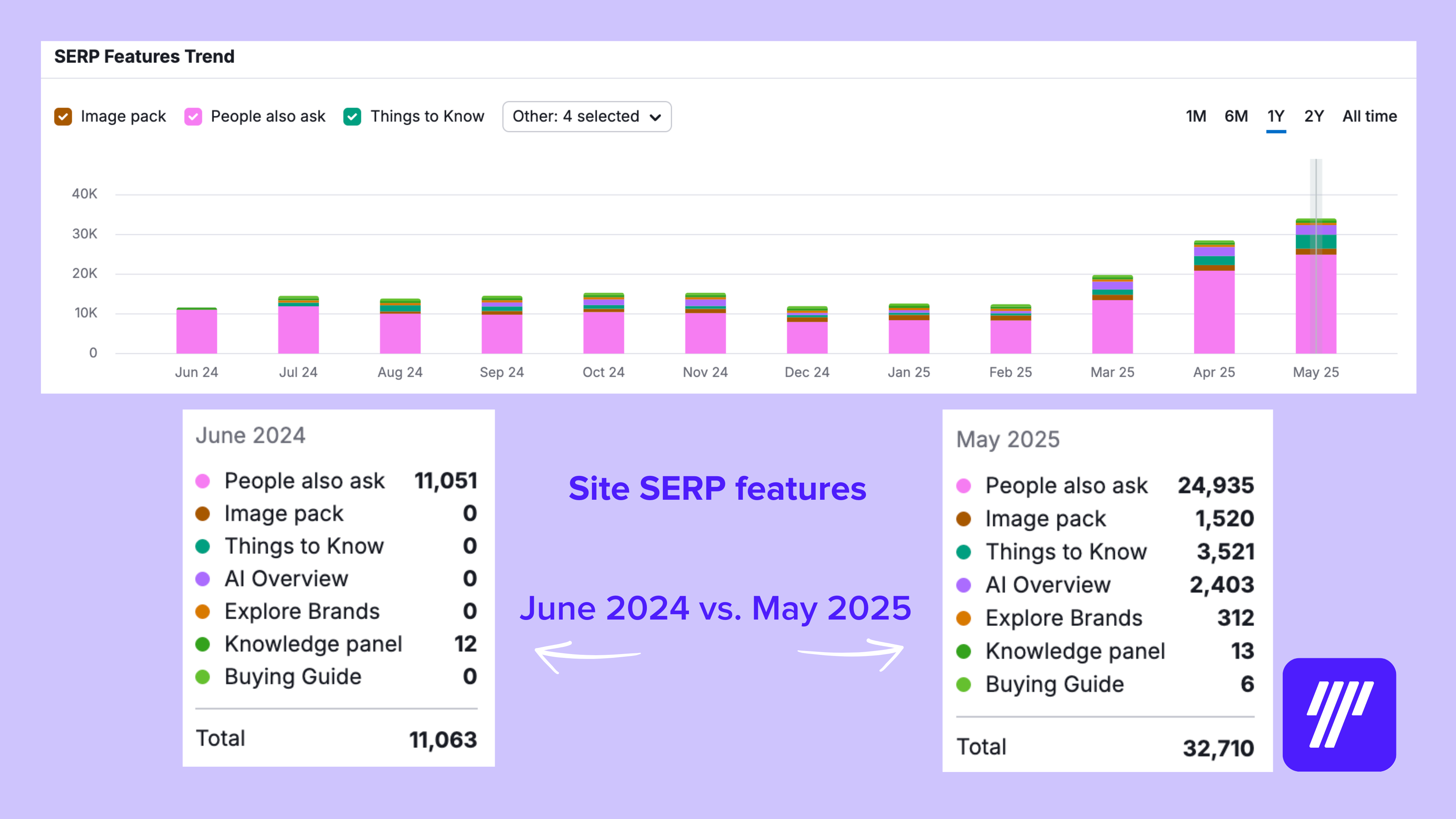
4. Revenue and Conversions
What they are: The business outcome of your SEO efforts.
Why they matter: This is the real north star. Traffic is a proxy—but revenue, leads, and qualified signups are the goals.
How to track: Attribution models in GA4, CRM integrations, and blended dashboards across search and sales data.
5. Branded Search Growth
What it is: Search volume and clicks for queries that include your brand name
Why it matters: AIO exposure often leads to brand recall. Users may not click the first time, but they come back.
How to track: GSC branded queries, Google Trends, and PPC brand campaign volume for corroboration.
Your strategy still matters—but it needs to evolve
SEOs are not here to panic. We’re here to adapt.
Ranking still matters. Visibility still matters. But the way you earn it needs to shift.
Here’s where to focus your strategy if you want to stay ahead:
- Entity optimization: This goes far beyond on-page content. Yes, build glossary pages and interlink related content. But also think off-page: pursue relevant brand mentions on high-authority sites, earn citations on Reddit threads, participate in YouTube interviews or industry podcasts, and post regularly on LinkedIn with clarity about your expertise. These signals help LLMs and search engines triangulate your authority and topic relevance.
- Content relationships: Topical authority doesn’t come from one-off articles. Build content ecosystems—interlinked, semantically aligned content that reinforces themes. Think topic clusters that serve both users and algorithms.
- Structured data & schema: Schema can help, especially in technical verticals. But it’s not the magic bullet. Use it to clarify context, especially for things like product details, authorship, or FAQs, but don’t stop there. Real clarity comes from how well your content answers queries and demonstrates depth.
- Answer-level optimization: AIOs favor clear, direct, and factual content. Include short, entity-dense blocks that answer queries head-on. These act as citation bait, or pull quotes that feed the AI.
- E-E-A-T reinforcement: Build digital authority through sustained, multi-channel effort. It’s not about bios alone. It’s about credibility shown through thought leadership, partnerships, contributor spots, and repeat mentions across trusted sources. Trust is a huge signal for AIOs, and if a user doesn’t trust a brand, no amount of generic SEO will help. E-E-A-T is essential for building brand authority.
If you’re using our C.L.A.R.I.T.Y. framework, this is where “Learn,” “Analyze,” and “Respond” do heavy lifting—tracking where your brand appears (or doesn’t), adjusting what you publish, and connecting the dots across channels. Look into “Learn” and “Analyze” to uncover where your visibility is strongest and where it’s slipping.
Learn more about how entity optimization strengthens your digital marketing →
Beyond Google: this is just one surface
AIOs are only the start. Discovery is happening in ChatGPT, Perplexity, Claude, and other LLM-powered interfaces that cite content, but often don’t deliver traffic unless users choose to click or manually search after.
Some of these tools pass referral traffic (and yes, you can track this in GA4), but many users simply read and move on.
This distribution means we’re entering an era of SEO as brand presence. Visibility without traffic. Authority without attribution. But that’s not a failure—it’s just a shift.
Learn more: What is Generative Engine Optimization (GEO) and Why It Matters →
For stakeholders: what SEO success looks like now
Here’s how to reframe SEO performance in your reporting and internal conversations:
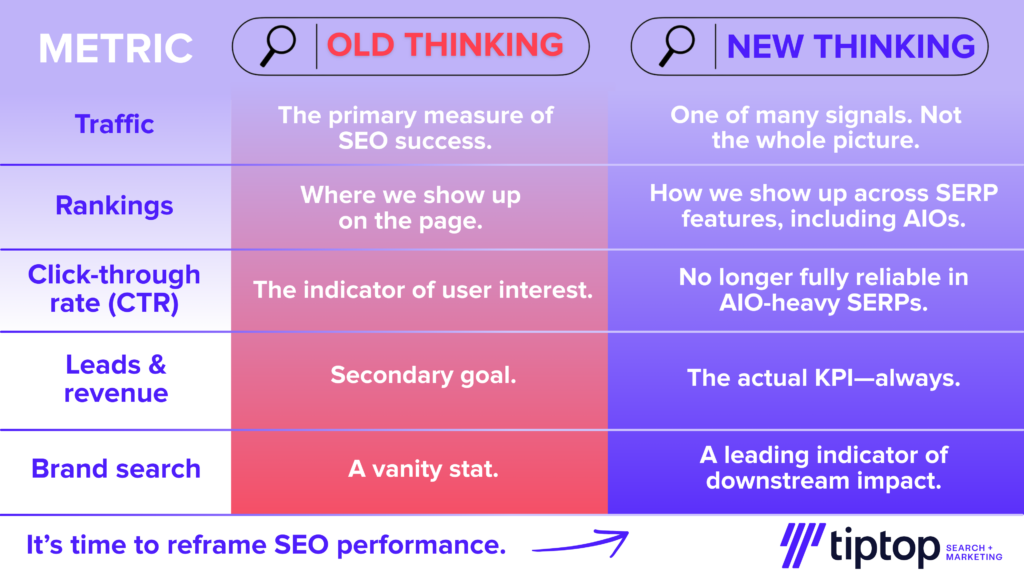
In sum, update your dashboards to bring visibility and conversions side by side. Normalize impressions and branded lift as signs of strength. And educate early, before others in the org ask why traffic is down.
This isn’t the death of SEO. It’s the maturity of it.
The rules have changed, but the goal hasn’t. SEO is still about being found, trusted, and chosen.
Your KPIs aren’t broken because your efforts failed—they’re broken because the measurement model stayed static while the search experience changed around it.
Now’s the time to pivot, educate, and evolve.
Curious where your AIO visibility stands—or where it could be? Let’s talk →
You might also like:


